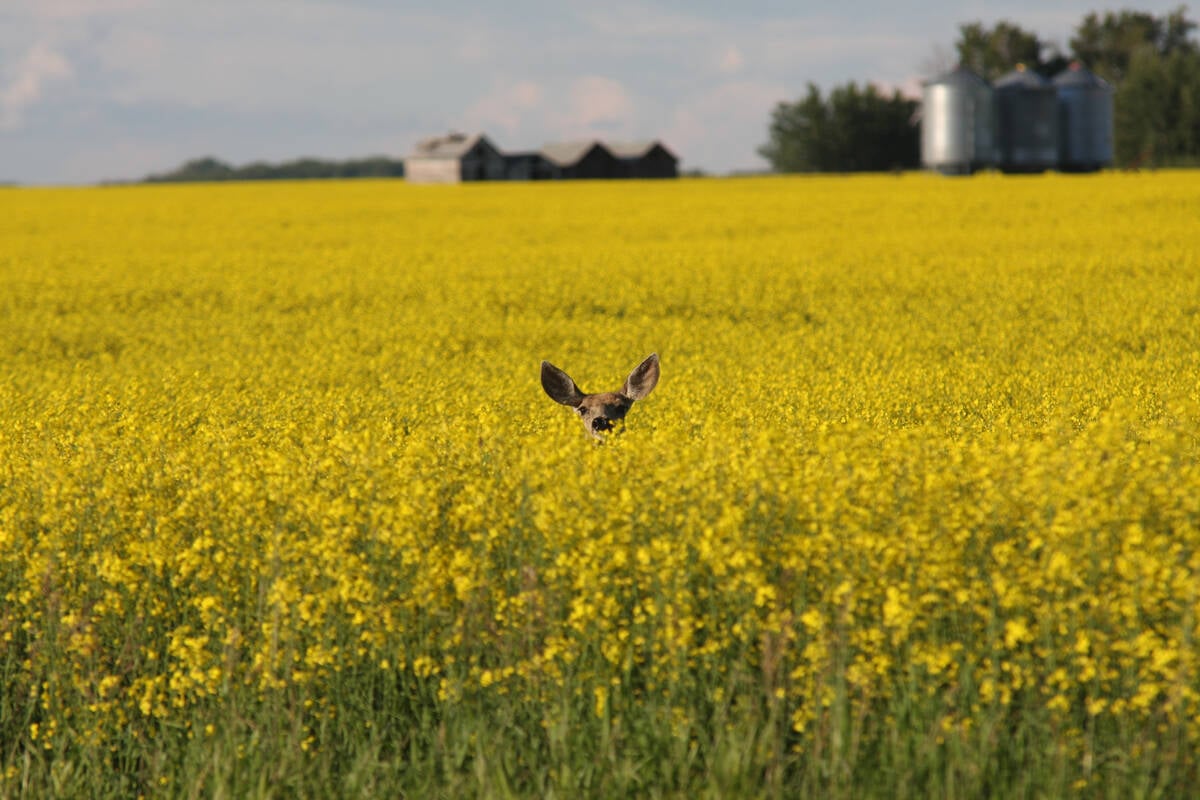WINNIPEG — The massive storms that steamrolled through parts of Manitoba this summer are causing significantly higher than average hail damage claims, according to the Canadian Crop Hail Association.
The association’s most recent hail report said the ratio of claims to policies have soared because of storms on July 4, July 10 and July 16, which affected large areas in south-central and southwestern Manitoba.
With the most recent cloudburst on July 20, David Koroscil of the Manitoba Agricultural Services Corp. said the number of claims they’ve received so far has already surpassed the annual average.
Read Also

Drones now used to assess wildlife crop damage in Saskatchewan
Wildlife damage in Saskatchewan crops is now assessed by drones and artificial intelligence.
“We’ve received 2,200 claims so far this year to date. The average is 2,100 for the entire year,” Koroscil said.
Claims are still rolling in from the last couple of days and more are expected in the weeks ahead, Koroscil said.
“Everyone’s seen the most severe, extensive storm this year because of the size of the hail stones — the one that went through Holland, Treherne, Notre Dame, Somerset and the Darlingford area a few days ago — but we still don’t know the size or the impact of that,” he said last week.
So far, damage has been considered moderate to minor because crops were at an early stage and able to recover, Koroscil said.
“We’re starting to run into situations now where the crops are all headed out and the damage becomes more severe because crops can’t recover at this stage.… We already know of reports where there has been significant damage to crops.”
Last year was one of the highest years on record, with 2,800 claims paid out for $31.1 million for the year ending Oct. 21, Koroscil said.
With hailstorms typically continuing throughout August, Koroscil said this year is shaping up to be similar, if not higher than last year.
“It’s just a matter of what type of weather we receive and how many more storms we get along the way,” Koroscil said.














